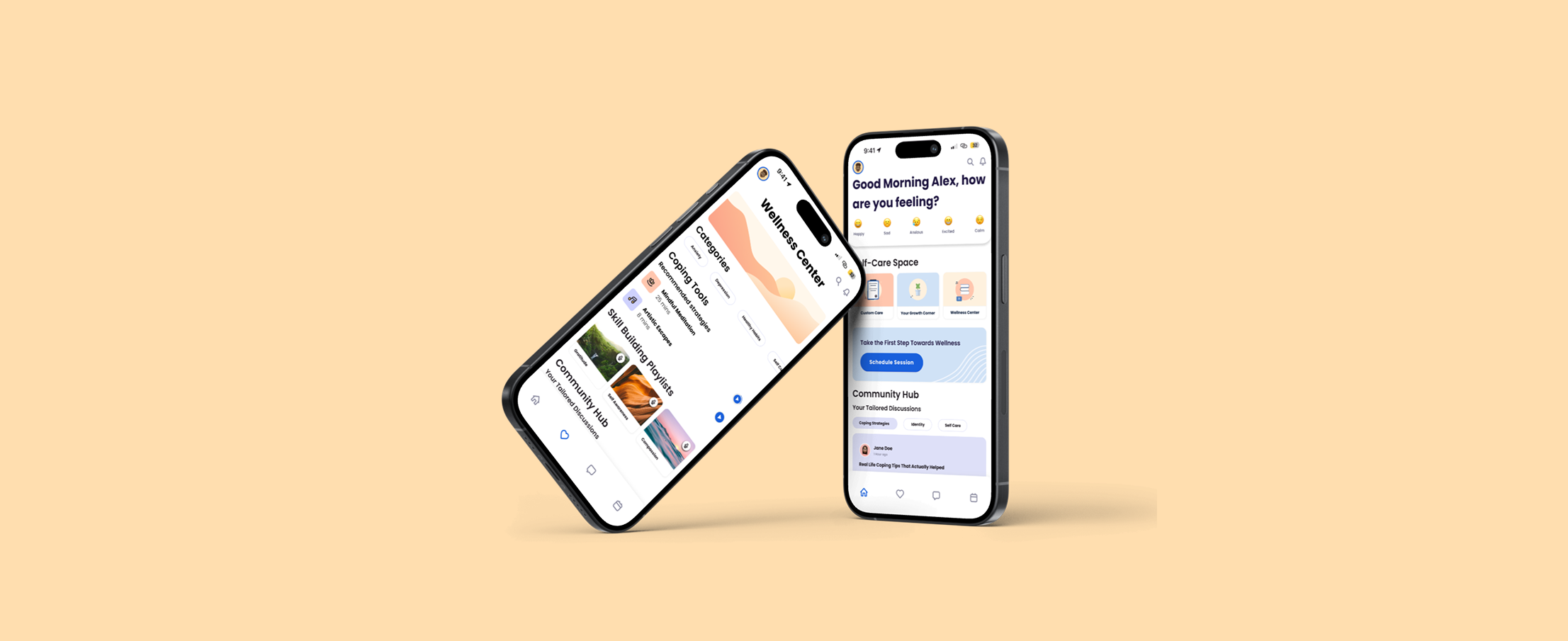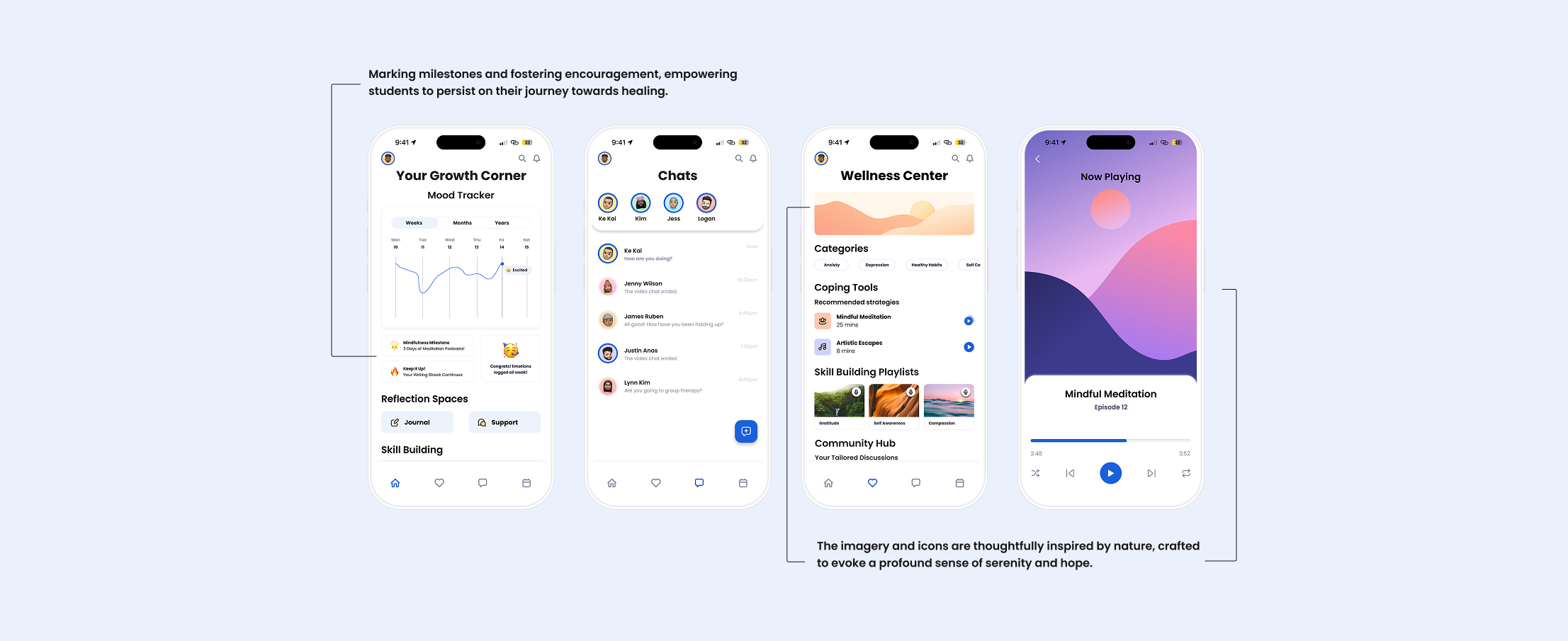Purpose:
To create an inclusive mental health platform rooted in culture and care — designed specifically for college students navigating academic stress, identity, and isolation. The name Kekai comes from my home of Oʻahu, where “ke kai” in Hawaiian means the tide. Just as the tide ebbs and flows, so do our feelings. This symbolism shaped the intention: a platform that honors natural rhythms, paying homage to my roots while offering students a sense of belonging and care.
Outcomes:
Kekai became a vessel to explore how design can hold space — especially for students who don’t see themselves reflected in traditional mental health systems. The result is a mobile-first experience that combines clinical credibility with community and cultural nuance.

Mental health needs on college campuses are growing, but access and trust remain limited — especially for first-gen, BIPOC, and marginalized students. Too often, solutions feel clinical, outdated, or out of touch. KEKAI was built to reimagine how support could look and feel. Not as a crisis tool, but as a daily companion — rooted in identity, empowerment, and the belief that well-being is a right, not a luxury.
The foundation of KEKAI began with deep listening: peer interviews, behavior mapping, and surveys highlighted a recurring truth — students crave emotional support, but often avoid existing services due to stigma, confusion, or cultural disconnect.
I mapped out user personas and sketched initial wireframes focused on three pillars: ease, relatability, and empowerment. The design system drew inspiration from the ocean, with soft gradients and wave-inspired UI patterns to evoke motion and grounding. The name “KEKAI,” meaning “the tide” in Hawaiian, symbolized this emotional rhythm — rising, receding, returning.
The platform’s core features included:
Through testing and iteration, I refined onboarding flows, simplified the nav, and prioritized mobile responsiveness to meet students where they are — literally.

Kekai became more than a portfolio piece — it was a reminder that design can speak to both system-level change and soul-level healing. It bridged the personal and the professional, pulling from my own heritage and my certification learnings to imagine something honest, useful, and human.
If expanded, this concept could evolve into a scalable wellness infrastructure for higher education — co-designed with students, counselors, and cultural leaders. This project reinforced my belief that inclusive design isn’t an aesthetic choice — it’s a responsibility.